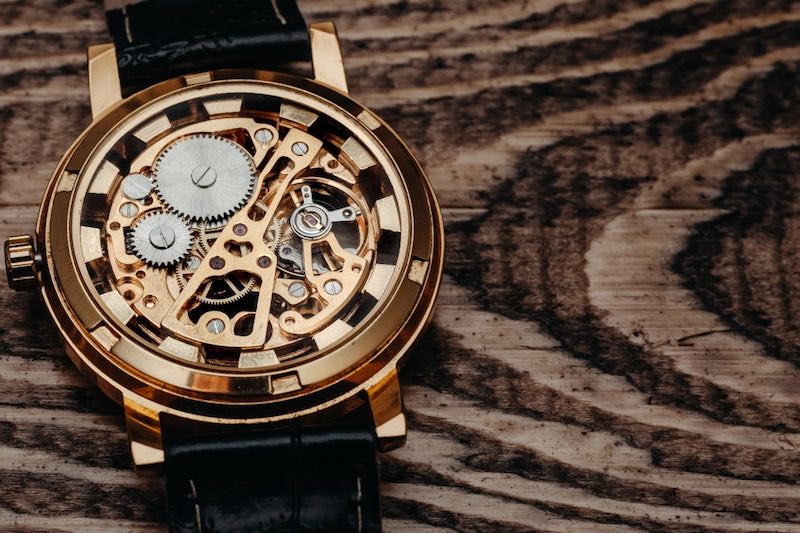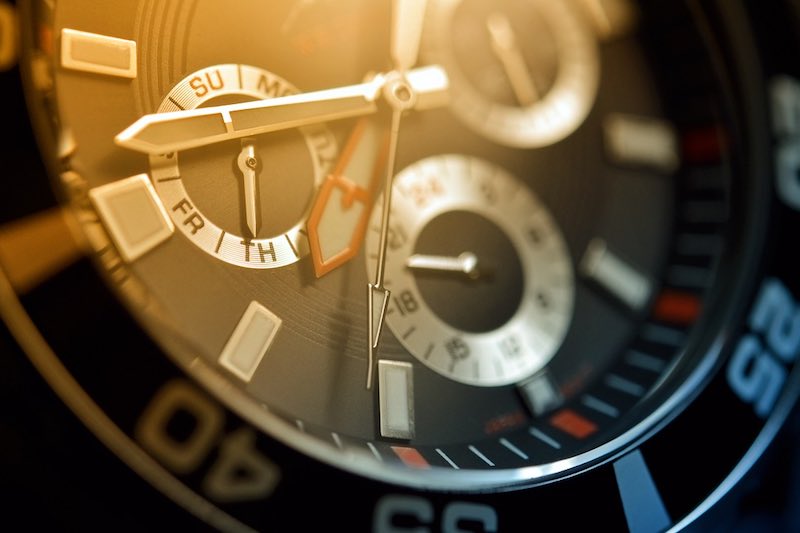
Cleaning a beautiful watch is as important as keeping your car detailed. For such a substantial investment, keeping your watch clean does more than preserve it and keep it looking pristine. A clean watch is a precise watch, as dust and other tiny detritus can damage the delicate works inside. The bonus is that professional or DIY cleaning makes your wristwatch sparkle and last for several lifetimes, ensuring your timepiece becomes an heirloom. Here are the different ways people clean their luxury watches, whether they’re at home or have taken their watch to a professional.
Basic Care at Home
Taking your high end women’s watches to a professional for cleaning is recommended for luxury timepieces. But, between visits, there are several steps you can take at home that are easy and simple, and which help your piece last a long time. Using a clean, dry cloth, wipe any sweat or dirt off all parts of your watch, the strap, and its back. If you wear your watch daily, there may be suntan lotion or moisturizing cream on it, and it’s best to get rid of these, so they don’t sit on the surface of the metal or glass face.
Debris, such as a sticky mixture of old cream and skin cells, can get caught in the links and spaces between the watch’s elements, potentially jamming up the internal mechanisms. A nightly wipe-down can help your luxury timepiece perform with perfect precision.
Cleaning Your Watch at Home
Before you start cleaning, the first thing you should do is make sure your watch is waterproof or water-resistant. If it is, you’ll have no problem cleaning your watch at home. If it isn’t waterproof, you must be very careful and ensure the crown is always screwed down tightly to avoid any water seeping into the watch works. If you’re not a professional watchmaker, you shouldn’t attempt to take your watch apart and put it back together. Watches are complicated and ornate. If you don’t know what you’re doing, you can easily damage the movement.
Even if you’re not a professional watchmaker, you can still make your luxury wristwatch gleam if you don’t have time to go to the jeweler. Here are some simple steps with materials you can find around the house. You’ll need a soft cloth, warm water, a shallow dish, and some dishwasher soap. An old, gentle toothbrush can also help get between the nooks and crannies. To clean your watch, you’ll need to soak it, scrub it, and dry it thoroughly. Here’s how.
Soaking
If you know your watch is water-resistant, you can soak it in a dish of warm water to loosen up any hardened debris lurking in between the links or in the buckle. If you’re feeling unsure whether or not a warm-water bath is the way to go for your timepiece, a damp, soapy cloth also works.
Scrubbing
Detach the band, if possible, so you can clean the area where the watch face connects to the band. Especially in places like the buckle or strap, which are composed of multiple interlocking pieces, be sure to get in-between to get rid of any hidden dirt.

Drying
Pat the water off with a dry, clean towel and let everything air dry before putting it all back together. If you have excessively hard water at home, use distilled water instead of tap water. Hard water can leave residue on the watch’s metal and the glass face, making it seem cloudy or tarnished. Usually, a few drops of dishwashing soap per 100 ml of distilled water will suffice to clean your timepiece. If your watch has a leather strap, you should be even more careful, as soap can crack and dry out the leather. After wiping your leather band down with a soapy cloth, use a leather conditioner to keep the material supple.
Professional Cleaning
If you’re looking to shine up your wristwatch, the best thing you can do is bring it to a watch or jewelry store for a professional cleaning. Although you should wipe down your watch every time you take it off, you only need to have it cleaned a few times a year professionally. Jewelers have the tools and know-how to treat your watch to a full cleaning treatment.
Cleaning
At a jeweler’s, your watch will be submerged in an ultrasonic cleaner, along with a cleaning solution that’s specifically meant for jewelry and ornate, complicated watches. The ultrasonic vibrations dislodge tiny particles that can jam the movement of your watch. If your watch includes gemstones, you should let the jeweler know—although most will be able to tell—especially if you have opals or emeralds in your watch, as those stones are softer and may be damaged by either the cleaning solution or the ultrasonic vibrations.
Polishing
After cleaning, your watch will be buffed and polished on a high-speed wheel. Any tiny scratches will be smoothed away, and your watch will look just like new.
Steaming
With a high-temp steam jet, the last dust and dirt will be blasted away. The steam also brightens up the metal significantly.

Pros and Cons
The high-quality buffing, scrubbing, and steaming make your watch look its best. After the significant investment you’ve made buying a luxury timepiece, the best way to preserve it is to take it to the professionals for thorough cleaning and maintenance. The drawbacks of professional cleaning are the cost and the time, as professional cleaning will take longer than cleaning at your house.
The benefit of scrubbing and buffing at your own house is that you control all the cleaning aspects, and it will cost you almost nothing to do. You probably have all of the materials you need at home already. It also is a relatively speedy process compared to professional cleaning. The cons of taking your watch cleaning into your own hands is that you are not a professional jeweler, so there is risk involved. Luxury timepieces are complex, and a single slip or poorly tightened crown could damage your watch beyond repair. Most likely, you also don’t have an ultrasonic jewelry cleaner at your disposal, so your cleaning may not be as thorough as the one your watch would get at the jeweler.
The Final Word
If you have a luxury watch, you want to wear it as often and as long as possible. You may even have plans to pass it down to the next generation. For your wristwatch to be in the best shape possible, you have to take good care of it, which means regular cleanings.

